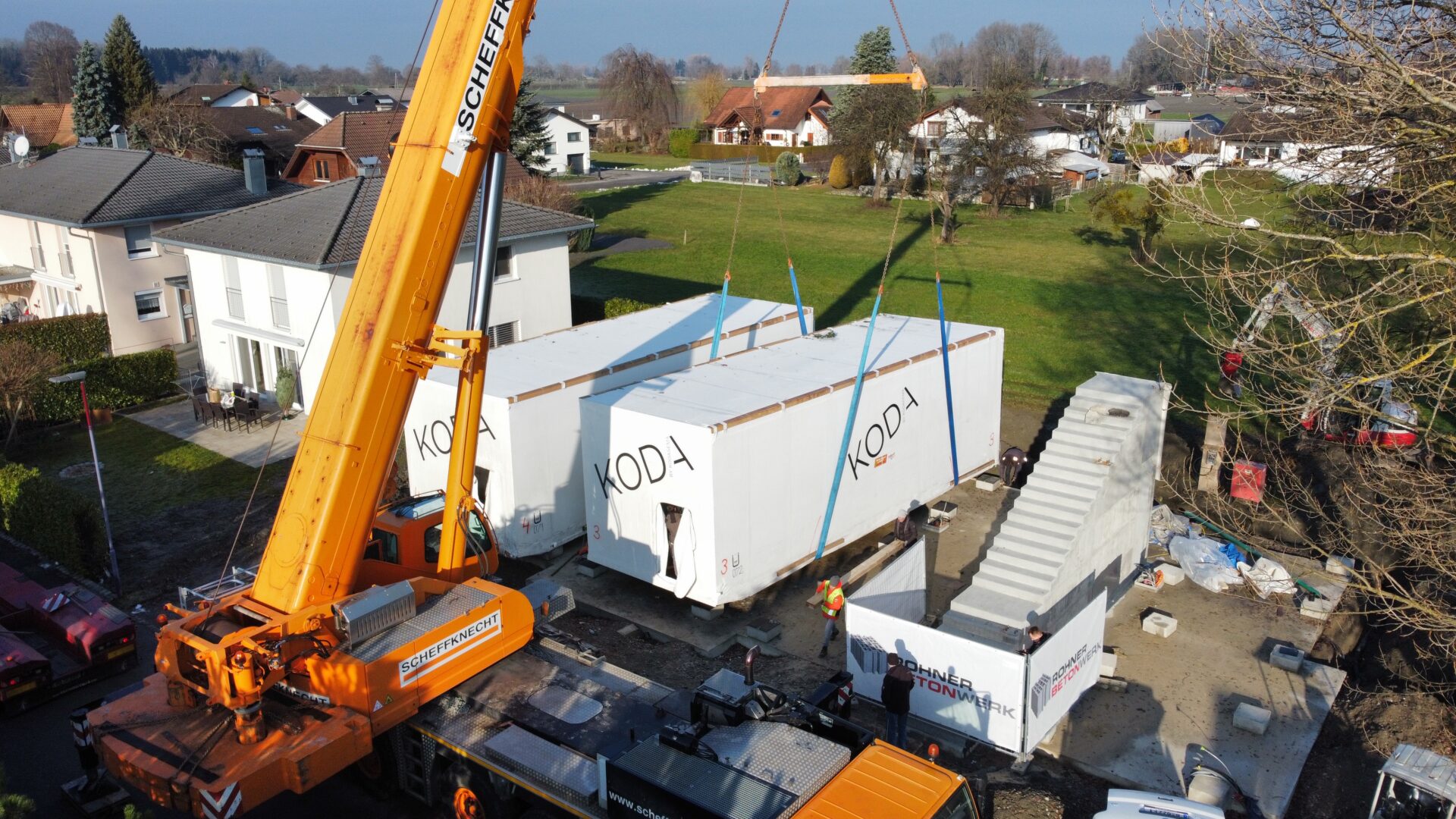“Where and how will my KODAs be produced?” some of you have asked. This question can have a number of different answers, depending on where you are located and what’s your order. Kodasema operates globally using various business models in different markets due to sustainability and scalability principles – to make sure we can keep both the price of your KODA and the ecological footprint of your new home low, thereby ensuring rapid shipping.
Kodasema started producing KODAs in-house, at first using concrete and later moving to wood, for increased sustainability. Since the Kodasema strategic switchover from concrete to timber-frame in Europe, Kodasema has been focussing on architecture, engineering and digitalisation of production know-how.
Estonia, being Europe’s largest modular timber frame house exporter and the world’s most digitally advanced country, enjoys a large pool of wooden house manufacturers to collaborate with, many of them combined under the umbrella organisation Estonian Woodhouse Association.
Kodasema has small-scale production in-house to ensure flexibility of fulfilling small orders and support consistent product development – essential to enable continuous innovation of building methods and product. This is our modular house production laboratory, where all ideas get extensively tested.
In order to serve large developments such as hotel and apartment building and retirement communities, Harmet, among the largest modular construction superfactories in the region and Kodasema started collaboration. Harmet produces KODAs on their production line based on a thoroughly digitised model, drawings and production handbook’s extensive data provided by Kodasema. The result maintains the high quality of KODAs and makes KODAs available for bigger-scale developments.
For the Americas and Australia, we have licensing collaborations with Big Sun Modular and LMPK Pty Ltd respectively. Using Kodasema intellectual property of patented industrial design, architecture and trademark, partners go on to use local materials and local practices to adopt KODAs for the regional building code. Particularities such as bushfires or ADU (accessory dwelling unit) legislation are taken into account and KODAs are respectively re-engineered, staying true to the design, feel and touch as part of the user experience.
Licensing collaboration in new regions is a way to grow together with strategic partners and jointly create a bigger impact for resolving the challenges of urbanisation, housing shortage with 1.8 billion substandard housing (UN Data) and 800 million people homeless. These goals can only be achieved when working together with strategic producers and property developers in bigger cities, globally. There are element and modular house manufacturers across Europe who produce larger modular single family houses, but miss out on a tiny compact housing solution between 20sqm and 100sqm in their portfolio. This is their opportunity for a quick start.
For developers, modular factories, municipal planners reading this and getting really excited about licensed production of KODAs or adding KODAs to their portfolio – yes, we’re always looking for new regions to conquer.
